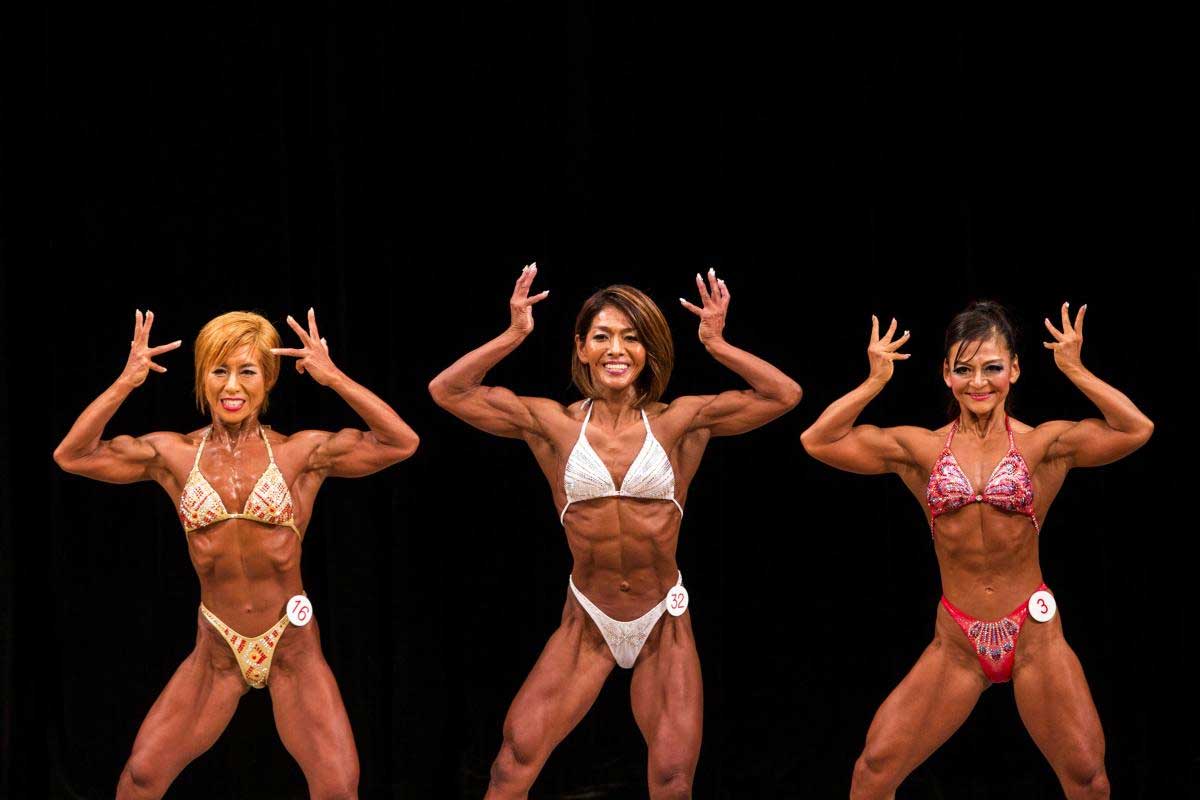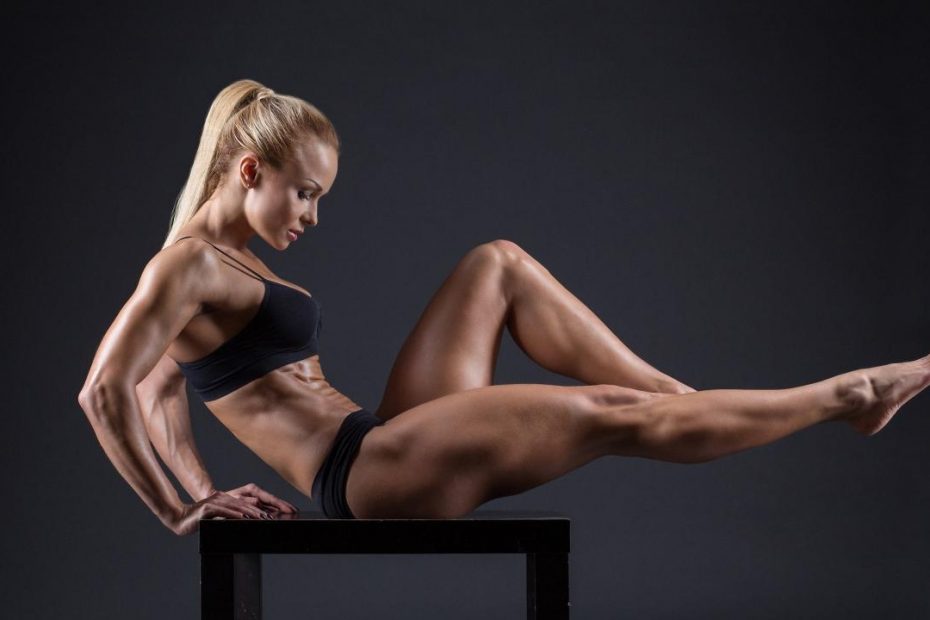Women’s fitness is a very tough sport requiring outstanding gymnastic training from the participants. Suffice it to say that the participants in fitness tournaments all as one should be able to perform somersaults, easily sit in twine and do push-ups on one hand. It is clear that it is difficult for a simple fitness lover, busy with children and work, to grow to a competitive level, due to the inevitable lack of time for many hours of training. The International Federation of Bodybuilding (IFBB), under whose wing the world fitness is developing, made a fundamental decision to simplify the competition rules for women and created a new type of competition – body fitness.
If there were no fitness, it would be worth inventing. The mere appearance of long-legged beauties on the stage delights the audience, what can we say about arbitrary compositions in which girls dressed in theatrical costumes try to demonstrate themselves in full splendor.
Bodyfitness competitions
The conditions for holding competitions in body fitness (sometimes it is also called figuring) are very democratic and allow the participation of women who have managed to do fitness for no more than six months. From the outside, it may seem that this is just a beauty contest among athletes. Moreover, the competition participants go on stage in swimsuits and high heels.
Here is a specific quote from the competition rules: “The judges evaluate the overall athleticism of the physique, taking into account all the physical development of the participant. Also assessed are the attractiveness of the face and hairstyle, the proportionality of athletic development, artistry and grace. The assessment takes into account the density and tone of the skin. The skin should be healthy and smooth, without signs of cellulite …
Body composition is measured by the level of muscle tone achieved by strength training. The muscles should be tight and taut, with a minimum amount of fat. The physique should not be overly muscular, vascularity and deep muscle “drawing” are excluded. Participants with excessive muscles, as well as less athletic body are put in the last places … “.

Article 2 – Authorization of International Competitions
2.1 Conditions of Authorization.
An International Competition is a competition in which participation of two or more national federations. To become the organizer of such a competition, the Organizer must first obtain official approval from the IFBB. In order to obtain official sanction, the Organizer must submit a request for official sanction to the IFBB. The request must include all the necessary information about the competition being organized. Official sanctions can only be issued to National Federations, excluding individuals / companies.
2.2 Contract.
Once the request for official sanction is approved by the IFBB, it will be sent Contract for the Organizer. The Contract will stipulate the terms, conditions and obligations of the Organizer for the successful running of the competition. The Organizer may not advertise or run a competition until the Contract is signed by all parties.
2.3 Sanction Fee.
The Organizer must pay for IFBB sanction as per the right to host the competition. The amount will be set by the IFBB. All international competitions are the exclusive property of the IFBB. The granting of an official sanction and payment for it does not entail the transfer of this property to the Organizer.
2.4 Payment of the sanction.
Payment of the sanction will be made in accordance with the deadline agreed between the IFBB and the Organizer. Once the Contract has been signed by all parties and payment of the sanction, in whole or in part, received by the IFBB has been made, the fee will not be refunded to the Organizer if the competition is canceled for any reason.
2.5 Violation of the rules and the Constitution.
After signing the Contract, in case of non-compliance by the Organizer for any reason with the Constitution or the Rules, as well as the terms and conditions of the Contract, or directives of the President, the President has the right to revoke the sanction and take any necessary measures (disciplinary or other) to protect the interests of the IFBB.
2.6 Authority.
The President may, at his discretion, delegate a member of the IFBB Executive Board to represent the interests of the IFBB in granting formal authorization and signing a Contract for an international competition.

Bodyfitness Categories
As for specific competition rules, all participants are preliminarily divided by height categories:
- up to 158 cm (inclusive);
- up to 164 cm (inclusive it is worthwhile);
- over 164 cm.
If you want to compete, then know that you will only be compared with the participants in your category. In the final, the judges compare the winners in the categories and name the champion.
Sometimes you can hear that genetics determines success in fitness. One might think that dividing the participants by height confirms this point of view. They say that we are talking about a breakdown of the participants according to a similar genotype with their potential for physical development. In fact, this is not the case. The growth categories were introduced simply for the convenience of the judges. Agree, it is much easier to compare athletes of the same height.
Authorization …
1. Do you wanna be big? Work with big weights!
From nowhere it came from (I have not been able to establish the authorship unambiguously), this delusion continues to dominate the minds of many bodybuilding fans. Too many.
In fact, strength does not mean mass at all. Take a look at powerlifters – many of them have neither mass (and if they do, it is mainly fat), nor impressive volumes. And at the same time they are very strong people! Yes, there are “lifters” who combine strength and beauty of build, but this is the exception to the rule, not the rule.
Many professional bodybuilders have reduced working weights at some stage in their careers (rather than increasing them at each workout, which is generally not realistic) and at the same time achieved significant progress. By what means? Due to the correct technique, targeted stimulation of exactly the right muscle group, that work with a lot of weight often simply does not allow it to be done. I will not touch my hands – a lot has already been written about them and the same amount will still be written. I will touch on such a popular exercise as the bench press. It’s no secret that powerlifters use their backs mostly. The legs are also very actively involved in the work. This is understandable: the muscles of the back and muscles of the legs are larger and stronger than the muscles of the chest. But our task is the growth of breastfeeding! I bet that nine out of ten desperately pressing heavy weights in training simply do not feel the pectoral muscles. Where does their height come from? It belongs to him the phrase: “If it were necessary, I would” pump up “big muscles with the help of an egg tray.” Of course, this is artistic hyperbole, but there is some truth in this saying. The weight of the weights should be such that the load falls exactly on the target muscle group. Do not chase big weights, think better about the correct technique. And more time under load.
2. Muscles grow only when you reach “failure”
Well, this misconception came from clear where – the author is the unforgettable “guru for all time” Mike Mentzer. This is not just stupidity, this stupidity is very, very dangerous.
First of all, what is a “rejection”? According to Mentzer – the inability to move the weight more than an inch. And if you rest for 5-6 seconds? And if you reduce the weight of the burden? It turns out that it can still be moved! Muscle fatigue occurs much later than the nervous system fatigue, but what good can the latter give you? Only a feeling of complete exhaustion, overtraining. Someone wittily noted that real muscle failure occurs only when the muscle breaks off the bone.
Secondly, the theory of “flipping a switch” has the same chances of explaining the mechanism of muscle growth as the efforts of a warrant officer from a well-known anecdote to explain to a soldier what logic is (remember: “one house has a green roof, another has a red one; that’s how a person lives and lives, and then – bam! – and dies). Mentzer should not give examples with a switch or a tan, but devote some time to studying at least the basics of human physiology. And not to project mindlessly onto physiology the philosophy of objectivism, of which he was an ardent adherent.
And, finally, it is indisputable that for the vast majority of normal people, constant training to “failure” in the style of Mentzer leads only to overtraining, loss of muscle mass, all sorts of injuries. Of the active athletes, as far as I know, only one of the active athletes adheres to this training style – Darrem Charles.
3. Muscles are best at building forced reps
If I had my way, I would banish from the gyms those “personal trainers” who thoughtlessly impose on their clients, most of whom started training recently, forced repetitions and other “high-intensity things”. The reason is the same – all these techniques, instead of growing muscles, simply kill them. Forced repetitions performed in every workout and, God forbid, in every set is a very fast way to achieve depletion of the nervous system, drive yourself into a state of chronic overtraining.
There is, however, another – somewhat unusual – way performing forced repetitions. I mean those cases when the coach does the main work for his ward, and the bench press, for example, turns into a cross between deadlifts and shrugs. But the fact that someone will do your work for you, your muscles will not get bigger.
So, forced repetitions have no right to life? Why, they have. But you should turn to them only when you have years of training behind you, you have the right technique in your asset, and when other techniques do not help in overcoming the stagnation that has arisen, or the goal is to deplete – “kill” – the target muscle group as much as possible. But this kind of intense technique should only be used for one muscle group per workout and no more than once a week.

4. For muscle growth, you need to do 8-12 repetitions in a set
The recommendation is based on mythical “research” by no less mythical “specialists”. In fact, not only all people are different – different muscle groups in the same person may predominantly consist of different types of muscle fibers. “Fast” and “slow”. And different types of muscle fibers need different reps per set to maximize their stimulation.
I know people whose quads responded best to high-rep training – 18-25 reps per set. And I also know those whose legs grew by leaps and bounds, with 4-6 repetitions. The same goes for other muscle groups. A range of 8-12 repetitions is fine for some “average” person, but are there many in real life? There is very little chance that you are.
5. This training program worked for someone, so it will work for me
It is far from certain that something that previously “exploded” your colleague’s muscles will work for you. All people are different, I repeat this once again, your task is to find something that suits you. It is incredibly difficult, but this is what determines the success in bodybuilding.
And what absolutely should not be done is to copy the programs of the “stars” of professional bodybuilding, and just famous athletes. Firstly, at each stage of the training, they set themselves clearly defined tasks that may not correspond to yours at all. Secondly, professional athletes are genetically gifted people, they can work harder and harder, their muscles can often respond to a completely different type of load than the muscles of an ordinary person. A classic example is Ronnie Coleman (“light weight, baby, light weight”). For one hundred out of a hundred who want to repeat his workout program exactly, it will not give ANYTHING.
6. Carefully keep a training diary
It is interesting only to ask, but for what? What do you display in it? It is unlikely that the intensity of your training session, the change in well-being, how much you liked this or that exercise, what subjective feelings it left behind, what type of training did your muscles respond best to. Most likely, this will be a standard set: “exercise – approach – weight”. And what does it give you? Of course, if you are going to get stronger, if your goal is to lift more and more weights, then – yes, keeping such a journal is justified. But this approach is more likely called powerlifting. And it has nothing to do with bodybuilding (fitness).
7. Always adhere strictly to your training plan
And this rule is not necessary to follow. What if you suddenly feel disastrously tired only after completing half of all the planned exercises? Continue training at the same pace and volume? But by doing so, you will only achieve overtraining and – ultimately – reduce the size of the muscles instead of increasing them. It is worth considering.
The opposite is also possible – the training is somehow reckless, too easy, despite the fact that the volume of load and weights are very decent. In this case, it is worth going a little further along the path of increasing volume, trying to set new power records. Since you are on your toes, use it! This doesn’t happen very often.
8. Always go to the gym on a strict schedule. Even if you don’t want it
Well, if you work in the gym, say, as a personal trainer, then only that remains for you. For ordinary visitors, this rule is not at all strictly obligatory. The main indicator should be your health. If you are feeling very tired, it is better to skip the workout. If fatigue is within acceptable limits, go to the gym, but try to exercise lightly. Just do not confuse fatigue with ordinary laziness.
And in no case show miracles of heroism if you are sick – training with a high temperature will not lead to anything good.
9. With the help of a properly planned “natural” training, you can achieve no less success than with the help of “pharma”
It is impossible. How many times have I had to write that our body perceives huge muscles as an evil that must be fought. To some extent, this is so – hypertrophied muscles are extremely non-physiological, they force the body, first of all, the cardiovascular system to work in an extreme mode.
Anabolic steroids allow you to overcome the body’s resistance. In addition, they allow you to quickly recover from the transferred load, which means you can train more and more often without the risk of overtraining. That will not slow down to affect the volume of muscles. So if you want to build really big muscles, then you just need to use the “advances in the pharmaceutical industry”.

10. Special case
It’s not even that confusing. This is a kind of special – “clinical”, in the language of medicine – a case, the most stupid phrase that I have read recently. God forbid, someone will take it seriously and start following it!
This phrase belongs to the pen of the six-time Mr. “Olympia” Dorian Yates – a man, in my opinion, who caused as much harm to bodybuilding as even his “teacher” Mike Mentzer did not do. Here it is: “Forget symmetry. The main task of a bodybuilder is to become as big as possible! Push forward on the correct basic program and don’t waste yourself on trifles. The more you get, the less discernible will become such trifles as asymmetries or imbalances in muscles. ”
Then you need to add – eat everything, do not limit yourself to food. Cakes, pastries, pork, butter – everything has to go into action. Then after a while you can forget about symmetry forever, and muscles – what a disproportion! – will be indistinguishable under the layer of fat. But – well, you will be very big!
Rounds in bodyfitness
There are three rounds of the same type in bodyfitness competitions: in a separate swimsuit, in solid and separate again. Why are they of the same type? Because all rounds are reduced to going to the center of the stage and performing the same 90-degree turns: to the right, back to the judges, again to the right and facing the judges.
Moreover, the entire height category is divided approximately in half, and both groups line up at the edges of the stage. The middle of it remains free and five participants are called there to perform the turns already known to you. Yes, and no free program with gymnastic somersaults!
Do you think it’s boring? But no! In each round, the participants present their own image, and sometimes even manage to change their hairstyle! In addition, excitement always reigns on the stage.
Body Fitness Training Guide
Athletes in the “body fitness” category should focus on specific parts of the body: shoulders, abdominal muscles, quadriceps. Your ideal schedule is four days of training and one day of rest.
Exercise uses substantially more weight with repetitions in the 8-12 range: you should feel like you’re training very hard. You can incorporate high-intensity interval training into your workout routine to boost fat burning.
Most women do not reduce body fat to dangerous levels, even when they train hard to get ready for competition. In the off-season, most bodyfitness and fitness athletes typically maintain a body fat level of about 14-16%. This figure is normal for all women who exercise hard and regularly do cardio.
However, if the level of fat in the body drops below 10% for a long time, it can become really dangerous and cause complications such as amenorrhea (absence periods for three months or more), decreased bone density and other health problems. Consult your doctor if your body fat seems to be dropping rapidly.

